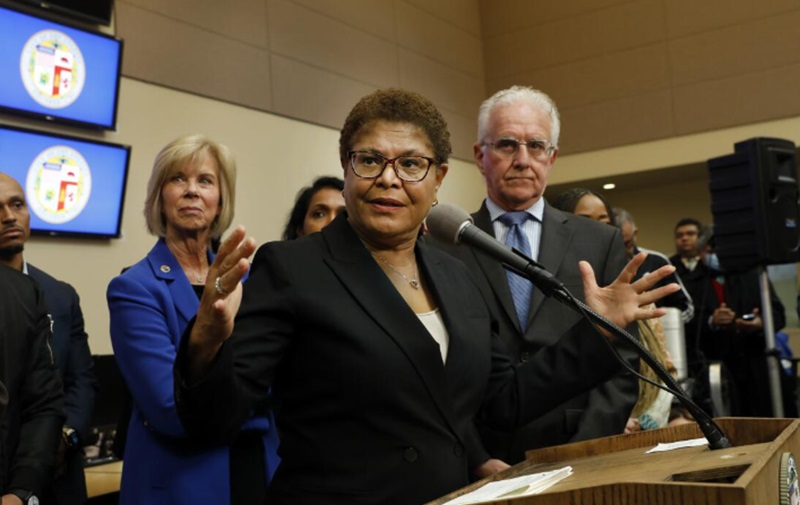Good morning! It’s Monday, November 13. Welcome to Katchup Briefing, the Korea Daily’s weekly English newsletter, where I’ll keep you informed with the latest news updates and perspectives from the Korean American community. If you want to explore more articles and columns from previous weeks, please visit koreadailyus.com.

When Los Angeles Mayor Karen Bass took office last year, she pledged to get 17,000 homeless individuals off the streets within a year.
With just over a month until her first anniversary in office, questions arise about the extent to which her promise has materialized and the amount of taxpayer money expended. This issue transcends a politician’s commitment; it is about the city’s ability to effectively allocate tax dollars to address the pressing homelessness crisis.
The mayor’s office reported last week that 18,792 people had been placed in temporary housing through various programs, including Inside Safe. Additionally, the City of Los Angeles states that 328 individuals have transitioned into permanent housing. However, experts are concerned that many who entered temporary housing programs may have returned to the streets.
This skepticism stems from the potential double-counting of individuals transitioning between housing types, the quick replacement of tent encampments on sidewalks after removal, and the likelihood that those exiting Inside Safe without a record of permanent housing have become homeless again.
The LA Department of Homeless Services recently indicated that as of October 27, Inside Safe has helped 1,682 homeless people, with more than 190 securing permanent housing. Yet, the agency estimates that at least 153 of the 1,682 individuals may have relapsed into homelessness.
While the achievement of the numerical target is debatable, the figures prompt a discussion on how to account for and manage the “returning” homeless population. If many are back on the streets, the effectiveness of the initiatives comes into question.
So, what was the financial cost?
City Hall disclosed in late September that programs like Inside Safe amounted to $81.2 million this year. Furthermore, the city acquired the Mayfair Hotel downtown in September, spending an additional $53 million on renovations beyond the purchase price. Over 3,300 federal emergency housing vouchers, initially intended to offer “respite” during the pandemic, have predominantly been utilized for assisting the homeless. Following this, the City Hall released another 1,882 vouchers, which have similarly aided the homeless more than other residents.
More comprehensive statistics from the mayor’s office are due next month, including updated figures and strategies. However, if those who initially benefited from these programs end up back on the streets, and if the influx of new homeless individuals is not precisely tracked, it remains challenging to claim that Mayor Bass’ promise has been kept.
As homeless encampments persist on the streets of Los Angeles, citizens continue to witness homelessness daily. Although Mayor Bass received applause on November 9 while addressing a national assembly of mayors on combating homelessness, the rigorous evaluation of her achievement on the homelessness crisis has not yet begun.
BY BRIAN CHOI [ichoi@koreadaily.com]




![Top K-Ramyun Meets Top Chef Chef Edward Lee preparing a Shin Ramyun Tumba dish. [Courtesy of Nongshim]](https://www.koreadailyus.com/wp-content/uploads/2025/03/에드워드-리-농심-신라면-콜라보-100x70.jpg)